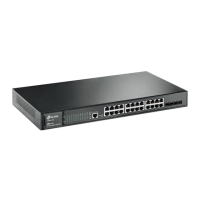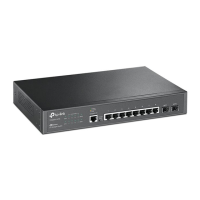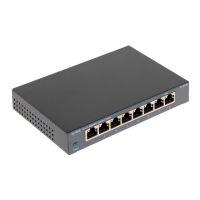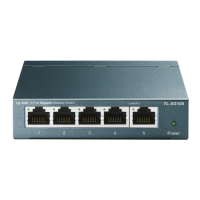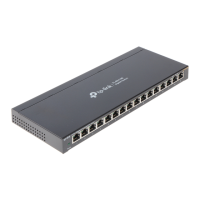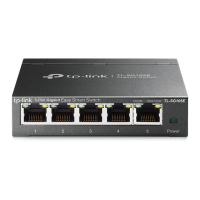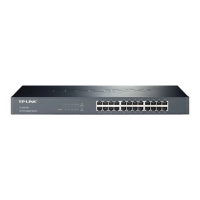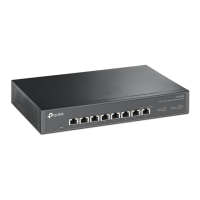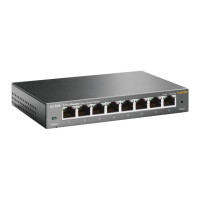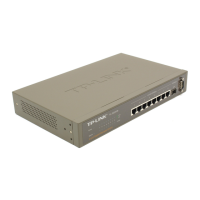Configuring QoS Class of Service Configuration
User Guide
631
For T2600G-18TS:
Choose the menu QoS > Class of Service >DSCP Priority to load the following page.
Figure 2-9 Configuring the DSCP to 802.1p Mapping and the DSCP Remap
Follow these steps to configure the DSCP Priority:
1) In the DSCP Priority Config section, configure the DSCP to 802.1p mapping and the
DSCP remap.
DSCP Priority Displays the number of DSCP priority. DSCP Priority is used to classify the
packets based on the value of DSCP, and map them to different queues. ToS
(Type of Service) is a part of IP header, and DSCP uses the first six bits of ToS to
represent the priority of IP packets. The DSCP values range from 0 to 63.
802.1p Priority Specify the DSCP to 802.1p mapping. The ingress packets are first mapped
to 802.1p priority based on the DSCP to 802.1p mappings, then to TC queues
according to the 802.1p to queue mappings. The untagged IP packets with the
desired DSCP value will be added an 802.1p priority value according to the DSCP
to 802.1p mapping.
DSCP Remap (Optional) Select the DSCP priority to which the original DSCP priority will be
remapped. When the switch detects the packets with desired DSCP value, it will
modify the packets’ DSCP value according to the map.
2) Click Apply.
Note:
In Trust DSCP mode, non-IP packets will be added an 802.1p priority based on the port to 802.1p
mapping and will be forwarded according to the 802.1p to queue mapping.
2.1.4 Specifying the Scheduler Settings
Specify the scheduler settings to control the forwarding sequence of different TC queues
when congestion occurs.
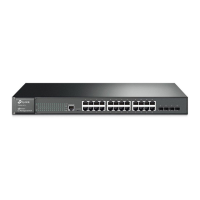
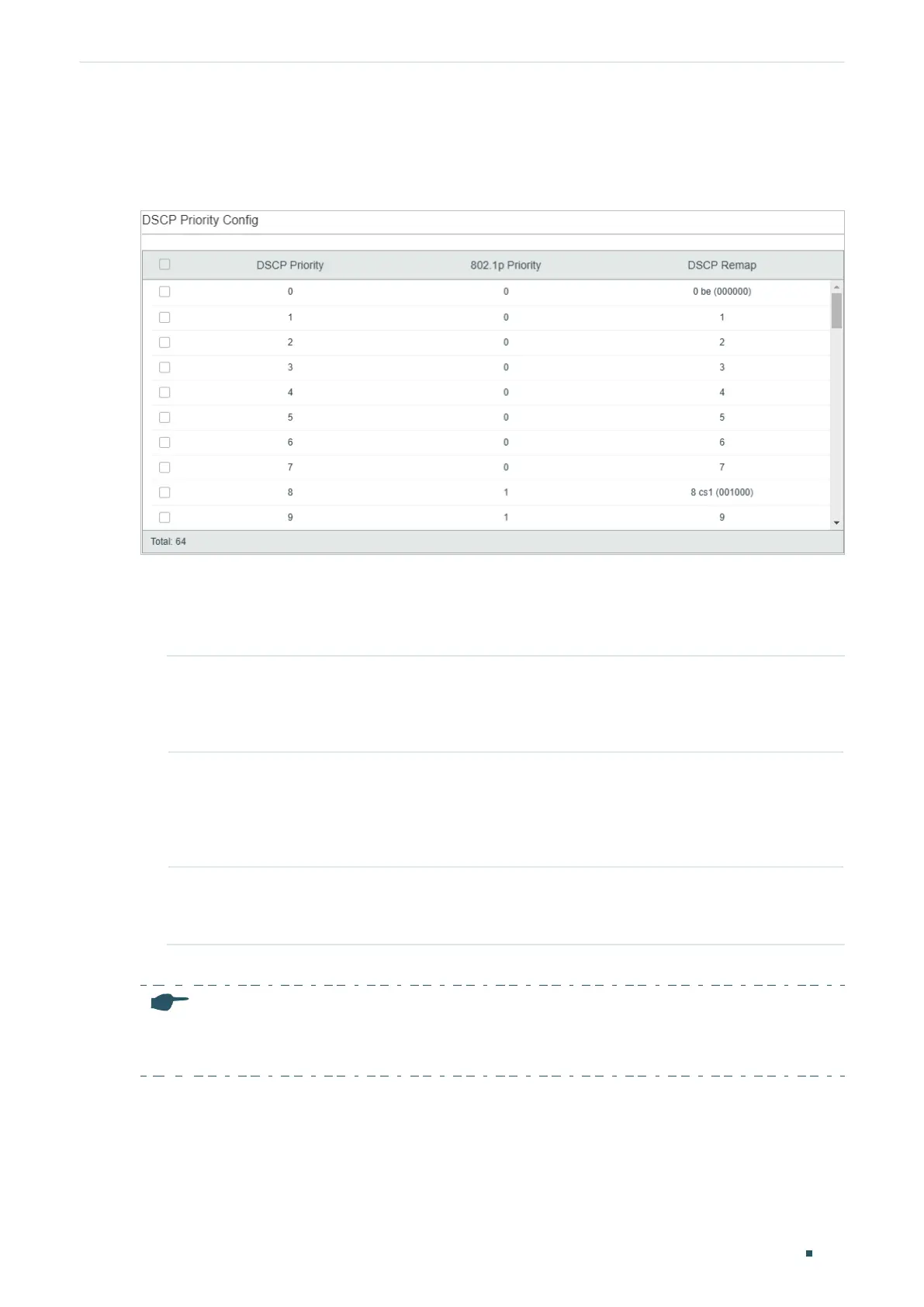